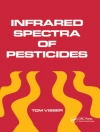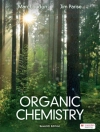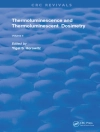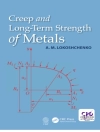Supramolecular Catalysis at its best! This book gathers the ‘who-is-who’ in the field who are presenting the most important topics in this exciting field.
Tabella dei contenuti
Preface
Introduction
LIGAND-LIGAND INTERACTIONS
Supramolecular Construction of Bidentate Ligands through Self-assembly by Hydrogen Bonding
Self-Assembled bidentate ligands in transition metal catalysis; from fundamental invention to commercial application
SELF-ASSEMBLED NANOSTRUCTURES AND MULTI-COMPONENT ASSEMBLIES
Assembled Ionic Molecular Catalysts and Ligands
Self-Amplification of Enantioselectivity in Asymmetric Catalysis by Supramolecular Recognition and Stereodynamics
Interlocked Molecules in Asymmetric Catalysis
Catalytic Supramolecular Gels
Supramolecular helical catalysts
Self-Assembled multi-component supramolecular catalysts for asymmetric reactions
LIGAND-SUBSTRATE INTERACTIONS
Harnessing non-covalent interactions for control of site-selectivity in transition metal-catalyzed C-H activation and cross-coupling
Supramolecular interactions in distal C-H activation of (hetero)arenes
Transition metal-catalyzed, site- and enantioselective oxygen and nitrogen transfer enabled by lactam hydrogen bonds
Supramolecular substrate orientation as strategy to control selectivity in transition metal catalysis
Phosphine Ligands with Acylguanidinium Groups as Substrate-directing Unit
Chemical reactions controlled by remote Zn…N interactions between substrates and catalysts
CATALYSIS PROMOTED BY DISCRETE CAGES, CAPSULES AND OTHER CONFINED ENVIRONMENTS
Artificial Enzymes Created Through Molecular Imprinting of Cross-Linked Micelles
Bioinspired catalysis using innately polarized Pd2L4 coordination cages
Supramolecular catalysis with a cubic coordination cage: contributions from cavity and external-surface binding
Transition metal catalysis in confined spaces
Catalysis by Metal Organic Cages: A Computational Perspective
N-heterocyclic carbene (NHC)-capped Cyclodextrins for cavity-controlled catalysis
Supramolecular Catalysis by Metallohosts Based on Glycoluril
Catalysis inside the hexameric resorcinare capsule: Towards addressing current challenges in synthetic organic chemistry
Supramolecular Organocatalysis Within the Nanospace of Resorcinarene Capsule
Resorcin[4]arene hexamer: from nanocontainer to nanocatalyst
SUPRAMOLECULAR ORGANOCATALYSIS AND NON-CLASSICAL INTERACTIONS
The Aryl-Pyrrolidine-tert-Leucine Motif as a New Privileged Chiral Scaffold: The Role of Non-Covalent Stabilizing Interactions
Chiral Triazole Foldamers in Enantioselective Anion-Binding Catalysis
Supramolecular Catalysis via Organic Solids: Templates to Mechanochemistry to Cascades
Exploration of halogen bonding for the catalysis of organic reactions
Chalcogen-Bonding Catalysis
Asymmetric Supramolecular Organocatalysis: the Fourth Pillar of Catalysis
SUPRAMOLECULAR CATALYSIS IN WATER
Metal Catalysis in Micellar Media
Surfactant assemblies as nanoreactors for organic transformations
Compartmentalized polymers for catalysis in aqueous media
Phosphines modified by cyclodextrins for supramolecular catalysis in water
Water-Soluble Yoctoliter Reaction Flasks
Chemical catalyst-promoted regioselective histone acylation
Protein-substrate supramolecular interactions for the shape selective hydroformylation of long chain a-olefins
Supramolecular assembly of DNA- and protein-based artificial metalloenzymes
SUPRAMOLECULAR ALLOSTERIC CATALYSTS AND REPLICATORS
Switchable Catalysis Using Allosteric Effects
Supramolecularly regulated enantioselective catalysts
Emergent catalysis by self-replicating molecules
Circa l’autore
Piet van Leeuwen worked at the Koninklijke Shell Laboratorium Amsterdam (1968-1994) heading the homogeneous catalysis group, he is emeritus professor of homogeneous catalysis of the University of Amsterdam (1989-2007) and the Eindhoven University of Technology (2001-2006), the Netherlands, he was Group leader in ICIQ, Tarragona, Spain (2004-2015), and had an IDEX Chair at LPCNO in INSA-Toulouse, France (2015-2020).
Matthieu Raynal is a researcher at Sorbonne Université, Paris, France. His current research focuses on the development of supramolecular helical catalysts, the design of functional chiral assemblies, and the structure-property relationship of supramolecular polymers.












